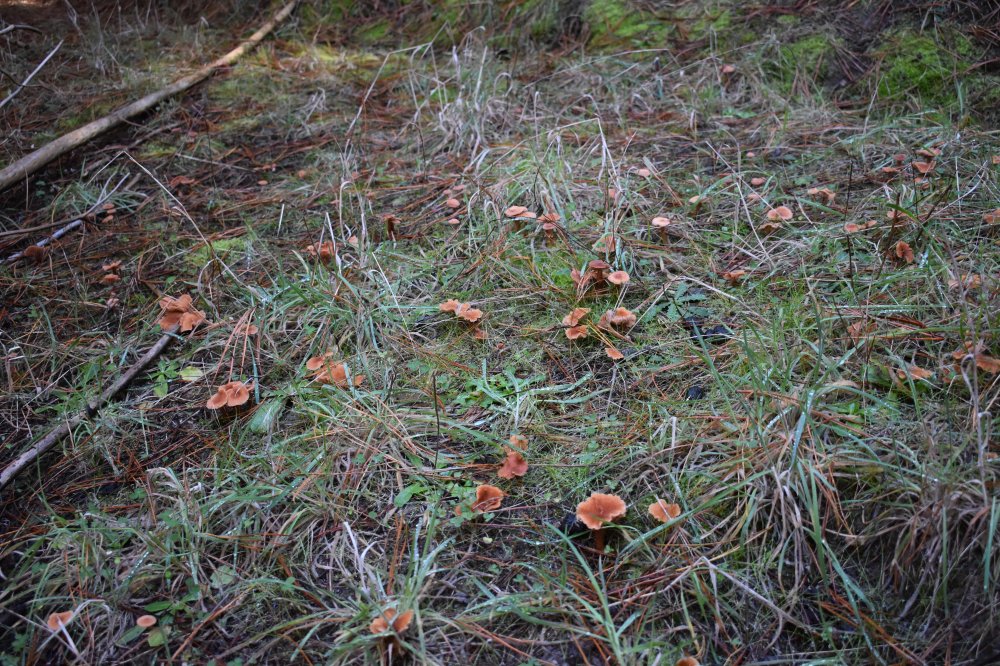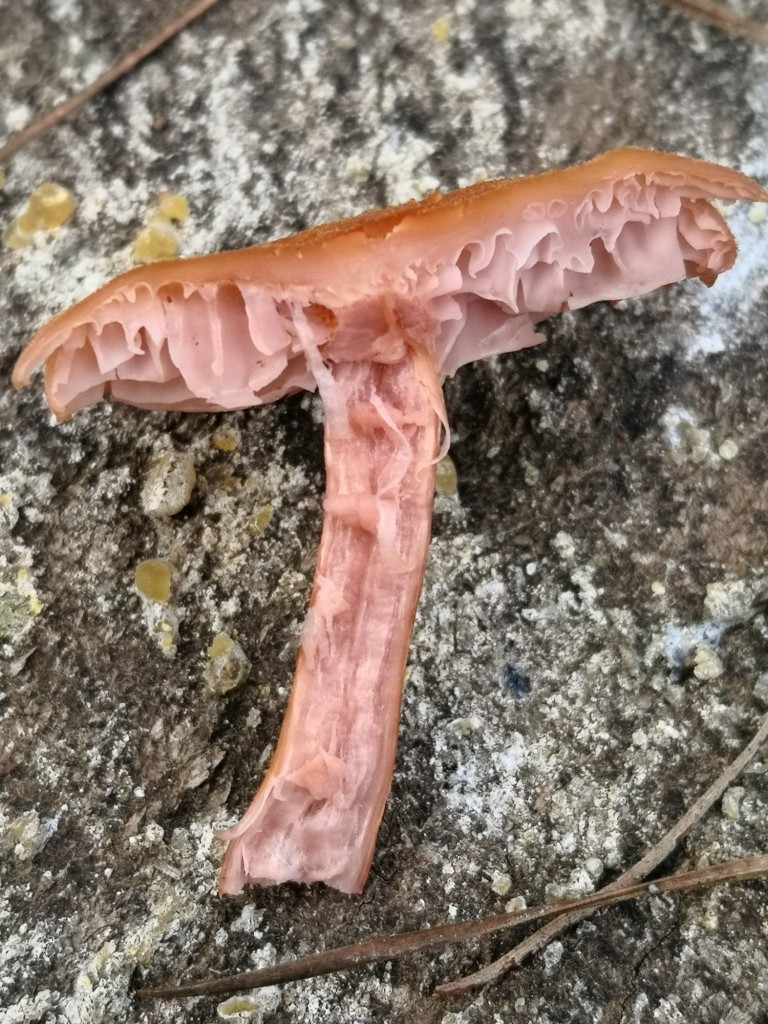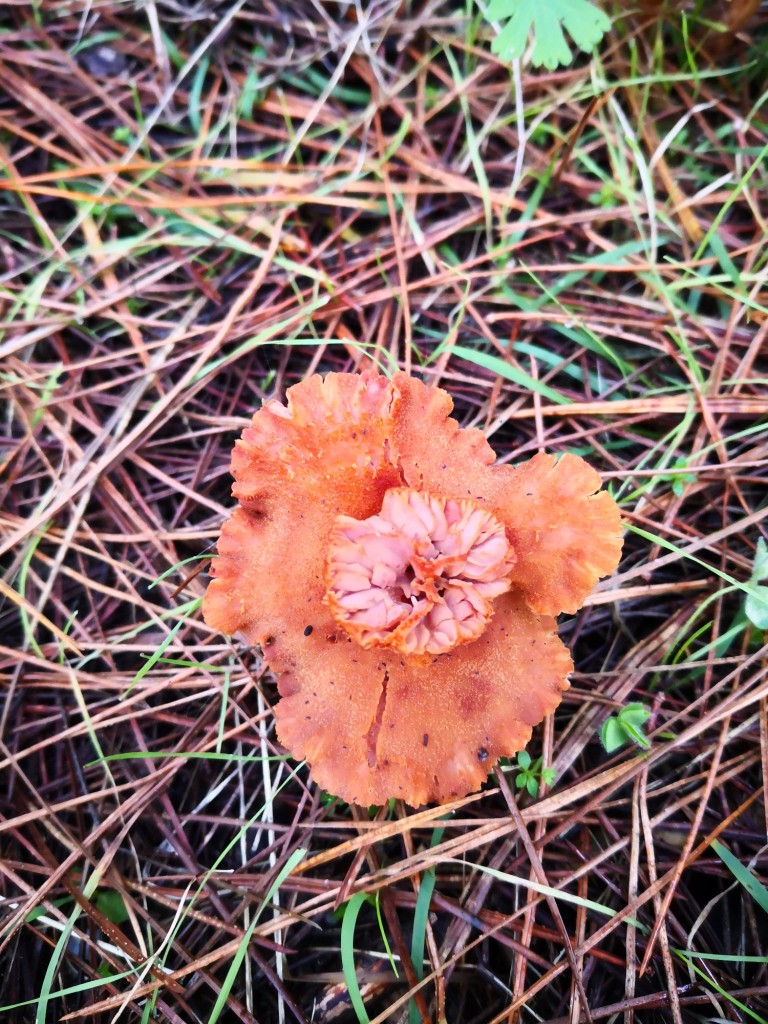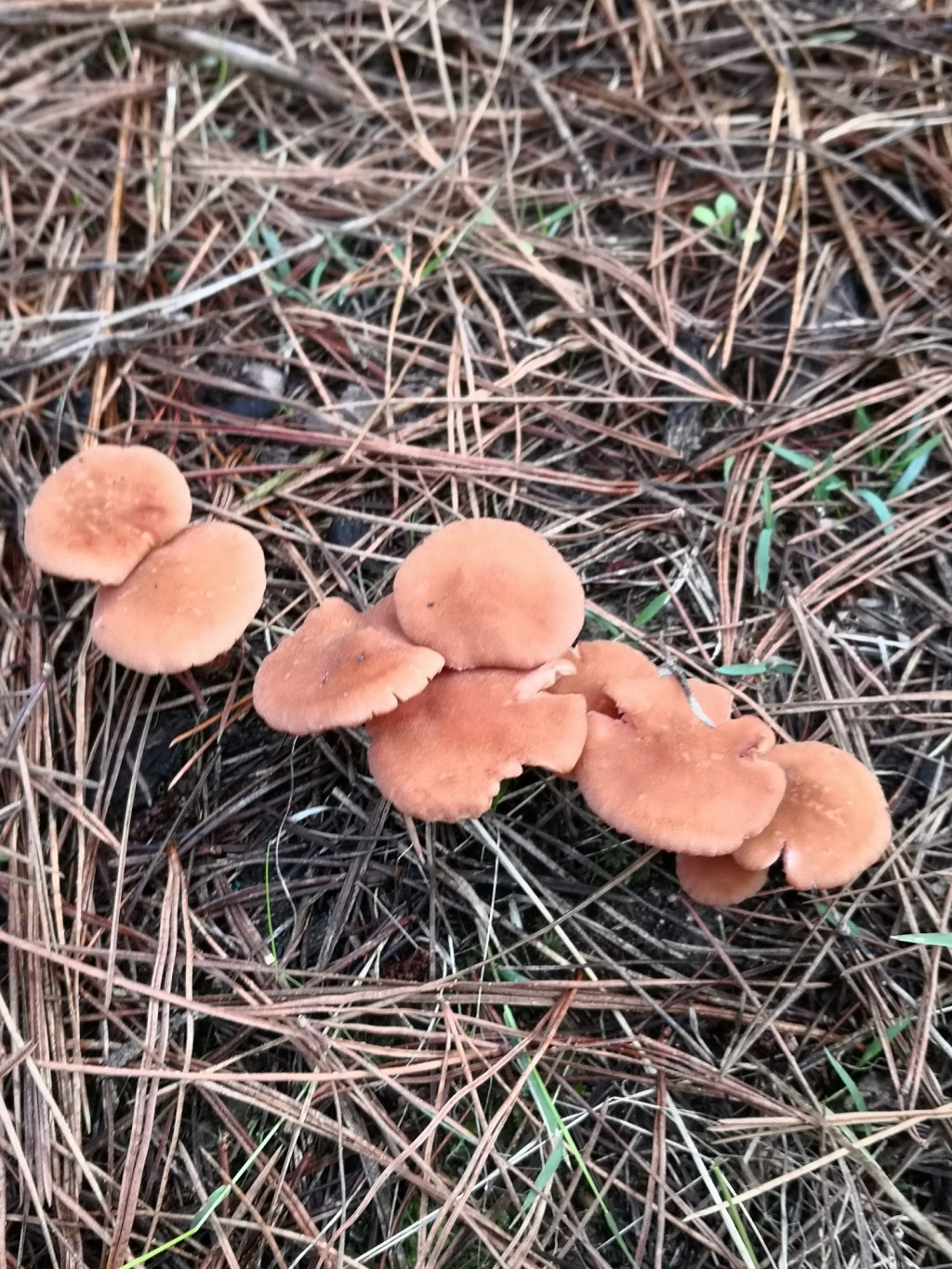
Division: Basidiomycota Class: Agaricomycetes Order: Agaricales Family: Hydnangiaceae
Laccaria are a very common mushroom in the Pine forests near Gawler. There’s several species around but those in Australia are all edible. The one we find in this area are Laccaria laccata. Laccaria have a mycorrhizal association with Pine trees and you’ll only find them where there are Pine trees.They’re particularly common in commercial Pinus radiata forests where you’ll find them along with Slippery Jacks, False Truffles and Saffron Milk Caps.
At the right time of year, once you ‘get your eye in’ on them, you’ll find yourself gathering bucketfuls of them with very little effort.

Laccaria are a very common mushroom in Pine forests. They occur either individually or, more often in groups that may cover a large area.
You can harvest a lot of Laccaria (is the plural ‘Laccaria’ or ‘Laccarias‘?) in a short time. They can be a bit fibrous and stringy, especially the stems. Myself, I like them pickled or dried and powdered as they take on a stronger taste this way.








Identifying Laccaria – a summary
If you’re under Pine trees and see something that you think could be a Laccaria, look for these details –
- Brown to pink cap 1/2 cm to 5 cm diameter.
- A velvety texture on the cap.
- The cap starts convex, then becomes more concave and wavy edged as the mushroom matures. It can even curl in on itself.
- Pinky/Purple or even slightly red gills.
- Small gills in between larger ones.
- Fibrous stem, hollow inside, 5 to 10 cm long, often twisted.
- Many Laccaria have a deformity on the cap. They’re still tasty though.
- You can even get an individual growing on another Laccaria!
- Spore colour is white.
If you find a mushroom under Pine trees that fits all of the above requirements, you’ve got yourself a Laccaria! They’re usually in the same area as Saffron Milk Caps, Slippery Jacks and False Truffles.
For reference, they’re listed on page 102 of ‘A field guide to Australian Fungi’ by Bruce Fuhrer.


2 responses to “Laccaria, the deceiver (Laccaria laccata)”
Love this site, good info.
LikeLike
Thanks Don. I do my best
LikeLike